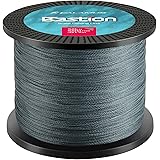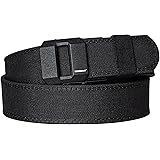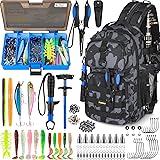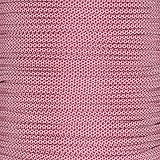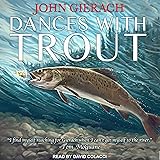Imagine setting out for a day of fishing, your stomach full of Chick-fil-A, and your only guide is the unpredictable scroll of Google Maps. Many anglers, including myself, often have preconceived notions about what makes a good fishing spot. We envision pristine lakes, well-known rivers, or remote wilderness ponds, overlooking the unassuming puddles or murky waters right in our own backyards. Yet, as the accompanying video brilliantly demonstrates, these overlooked spots can often hide the most incredible surprises, challenging everything you thought you knew about finding quality fish.
The “Google Maps Fishing Challenge” showcased above perfectly encapsulates this adventurous spirit. Our intrepid fisherman embarked on a quest to locate a random body of water, ultimately stumbling upon a small, residential pond in Maryland that appeared far from promising. What started as a casual experiment quickly transformed into an exciting discovery, revealing that even the most “disgusting” looking waters can harbor surprisingly large and healthy bass. This journey teaches us valuable lessons about staying open-minded and adaptable in our pursuit of fishing success.
Embracing the Unexpected: The Google Maps Fishing Challenge
The premise of a Google Maps fishing challenge is wonderfully simple yet immensely exciting. It involves picking a random direction from your starting point—in this case, a Chick-fil-A—and scrolling until a promising body of water appears. This method forces anglers to explore new areas and venture beyond their usual haunts, often leading to unexpected discoveries. For the fisherman in the video, a mere six-minute drive led him to a small pond that would soon defy all expectations.
Firstly, upon arrival, the pond appeared muddy and uninviting, characterized by what seemed to be a significant algae bloom and extremely warm water. These conditions typically deter anglers who seek clearer, cooler environments where fish are often more active. However, the true beauty of fishing lies in its unpredictability, and this challenge truly highlighted the importance of giving every spot a fair chance. It’s a powerful reminder that looks can be deceiving when it comes to fish habitat.
Decoding the Pond: Understanding Water Conditions and Structure
Despite its initial appearance, a closer inspection of the pond provided crucial clues about its potential. Our fisherman noted that beneath the murky surface, the bottom was composed of sand and gravel, not just muck. This detail is incredibly significant for bass populations, as a sand and gravel bottom often indicates good water quality and suitable spawning grounds, allowing these fish to thrive even in seemingly unfavorable conditions.
Secondly, understanding the subtle nuances of a fishing environment becomes paramount. The video highlighted the low visibility, around four inches, which meant fish would be hugging tight to cover. Shallow water conditions, with the pond being less than four feet deep in the middle, also influenced where fish would congregate. Such observations are critical for adjusting your approach and increasing your chances of a successful catch, no matter how small the body of water may appear.
Uncovering Productive Fishing Structures
Bass, like many other fish, are creatures of habit and prefer areas that offer protection, food, and ambush points. In this small Maryland pond, the reeds along the shoreline proved to be a highly productive structure. Fish were consistently found stacked along these reeds, especially close to the bank in the early morning muddy water, indicating a clear pattern.
Moving on, the fisherman also discovered a drop-off and submerged branches, which are classic bass hideouts. These features provide depth changes and overhead cover, offering bass comfort and an ideal location to ambush prey. Paying attention to these subtle changes in the underwater landscape can significantly improve your angling success, transforming an unproductive area into a hotspot.
Strategic Bait Selection and Technique Adaptation
Success in fishing often hinges on an angler’s ability to adapt and select the right bait for the prevailing conditions. The video showcases a flexible approach, starting with a buzzbait and then adjusting as the day progressed and the fish’s behavior changed. This dynamic strategy is a cornerstone of effective fishing, allowing you to maximize your chances.
Mastering the Buzzbait for Reaction Strikes
The buzzbait proved to be an incredibly effective lure in this murky, shallow pond, especially for eliciting reaction strikes. A white and chartreuse quarter-ounce buzzbait was the primary tool for enticing bites. This noisy, topwater lure is excellent for covering water quickly and drawing aggressive strikes, particularly in low-visibility conditions where fish rely more on sound and vibration.
Next up, a particularly insightful technique involved making multiple casts—up to ten or thirteen—in the exact same area where fish were known to be present. This persistent approach, described as “annoying” the fish into biting, can often trigger a reaction strike from a hesitant bass. Even when fish aren’t actively feeding, the repetitive disturbance of a loud buzzbait can provoke them into striking out of irritation or territorial instinct, as perfectly demonstrated in the video’s multiple significant catches.
Adapting with Follow-Up and Alternative Baits
When the buzzbait action slowed, the fisherman wisely switched to a black wacky rigged Senko as a follow-up bait. Senkos, especially when wacky rigged, offer a more subtle presentation and a slower fall, often enticing fish that are wary or less active. This change in presentation can be crucial when trying to coax a bite from a fish that missed a topwater strike or has become accustomed to the initial lure.
Furthermore, an attempt was made with a white and chartreuse tipped chatterbait to explore the middle water column, but it proved difficult to use due to snags. Consequently, a finesse spinnerbait with a safety-pin style arm was introduced. Spinnerbaits are excellent for navigating through cover like reeds and branches, making them a versatile choice when fishing in snaggy environments. This constant adjustment in bait selection based on conditions and fish response is a hallmark of skilled angling.
The Lesson Learned: Never Underestimate a Body of Water
The most profound takeaway from this Google Maps fishing challenge is the powerful message to “never underestimate any body of water.” The pond, initially dismissed as “disgusting” and “not very impressive,” turned out to be a hidden gem teeming with quality bass, including a three-pound “chunk.” This experience serves as a vivid reminder that appearances can be incredibly deceptive in the fishing world.
As the day progressed and the sun rose higher, creating a high-pressure system with not a single cloud in the sky, the bite eventually died down. However, the lessons learned were invaluable. This adventure reinforces the idea that true fishing success often comes from exploring new grounds, observing conditions carefully, and being flexible with your techniques. The surprise catches from this random Google Maps fishing challenge underscore that remarkable discoveries await those willing to cast their lines into the unexpected, demonstrating that sometimes the best fishing spots are the ones you least expect.


